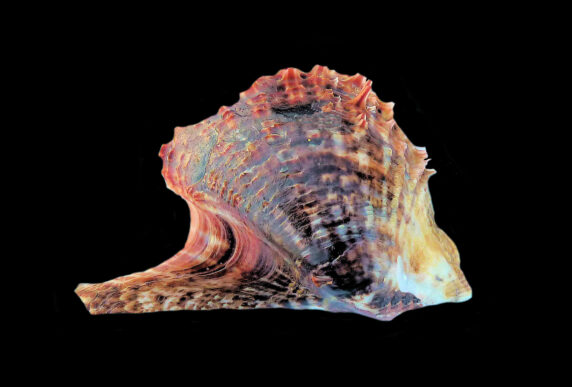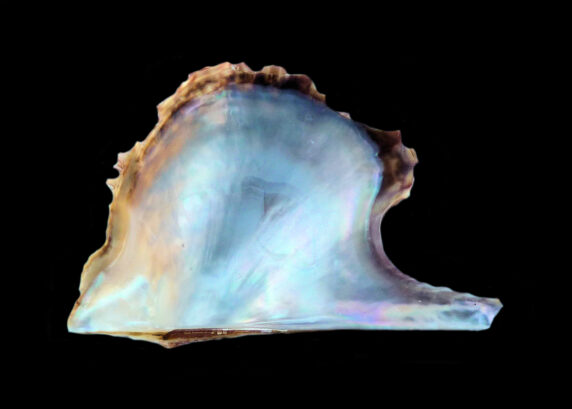Pacific Wing Oyster Shell, Pteria sterna

 Pacific Wing Oyster Shell, Pteria sterna. Shell collected from the El Tule tidal pools, Km 17, Baja California Sur, January 2017. Size: 9.0 cm (3.5 inch) x 5.0 cm (2.0 inches).
Pacific Wing Oyster Shell, Pteria sterna. Shell collected from the El Tule tidal pools, Km 17, Baja California Sur, January 2017. Size: 9.0 cm (3.5 inch) x 5.0 cm (2.0 inches).
The Pacific Wing Oyster, Pteria sterna (Gould, 1851), is a bivalve mollusk that is a member of the Pearl Oysters of the Pteridae Family. They ae also known as the Rainbow-lipped Pearl Oyster and in Mexico is as concha nacar, concha perla, callo de arbol del Pacifico and ostra perlera nacarada. They have a “P” shaped profile with the main body of the shell being somewhat rounded and the hinge and elongated wings form the stem of the “P”. The shell varies in depth, and is only somewhat inflated. The exterior of the shell is scaly, with the scales becoming short spines as they approach the margin. The exterior of the shell is brown in color and the interior is nacreous and sometimes blistered. The Pacific Wing Oyster shell reach a maximum of 15.2 cm (5.9 inches) in length and 9.8 cm (3.9 inches) in height.
Pacific Wing Oysters are found attached to rocks, gorgonians, and other hard surfaces, by means of byssus in turbid water and are often associated with mangroves from the intertidal zone to depths up to 24 m (80 feet). They range from Southern California to Peru, including the Cocos and Galapagos Islands. They are found throughout the Sea of Cortez. Pacific Wing Oysters are farmed extensively by the cultured pearl industry.
Synonyms include Avicula fimbriata, Avicula eximia, Aviclula labella, Aviclua peruvian, Aviclula sterna, Aviclua viresi, Pteria beliana, and Pteria rositae.